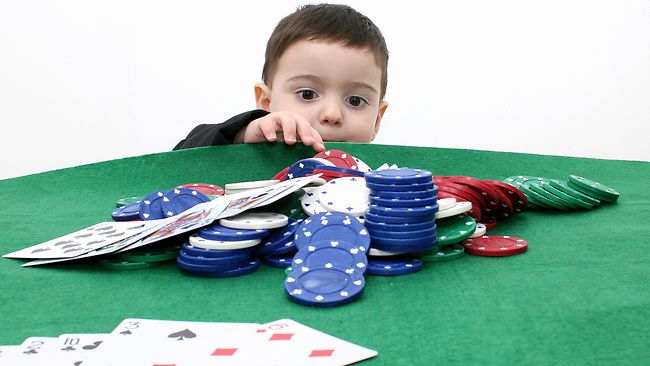The gambling industry, including popular platforms like Stake casino, is strictly reserved for adults, but the thrill of the spin, the allure of the win, and the rush of chance are often introduced much earlier in life – sometimes long before the legal age of 18. Surprisingly, many of the psychological mechanisms that make gambling addictive are also embedded in digital games targeted at children and teenagers. But how exactly does this happen? Are kids being primed to enjoy gambling without realizing it? And what can we do to address this hidden influence?
In this comprehensive article, we explore how games designed for minors incorporate casino-like mechanics, shaping emotional and behavioral patterns that mirror adult gambling habits. Our focus is to shed light on these early influences and offer expert insights into how the cycle begins before real money ever changes hands.
The Psychology of Excitement: How Games Mimic Gambling
Variable Reward Schedules
Games designed for children frequently use variable reward mechanisms—unpredictable payouts of points, power-ups, or cosmetic rewards. This is the same reinforcement method used in slot machines, where players are conditioned to keep playing in hopes of a win.
Randomized Loot Boxes
Loot boxes, mystery crates, and card packs in many online games function almost identically to slot pulls. Kids spend real or in-game currency for a chance at rare items, mimicking the betting and jackpot dynamic of real casinos.
Skin Gambling and Third-Party Markets
Games like Fortnite or CS:GO allow cosmetic items (“skins”) to be bought, sold, and even gambled through third-party sites. These ecosystems act as grey markets for gambling-like behavior under the guise of gaming.
Early Exposure: A Gateway to Risk-Taking Behavior
Familiarity Breeds Comfort
When children regularly engage in reward-based gameplay, they become comfortable with the sensation of taking risks for uncertain rewards. Later, when encountering platforms, this behavior already feels natural.
Social Reinforcement
Games encourage sharing wins with friends, adding a social layer of reinforcement. Kids learn not just to crave the win, but the attention and status it brings.
Repetition Equals Conditioning
Frequent repetition of these reward mechanics wires the brain to expect excitement from unpredictability—core to both video games and gambling.
The Role of Game Design in Youth Conditioning
Sound and Visual Stimuli
Just like slot machines, youth-targeted games use celebratory sounds, flashing visuals, and rewarding music to simulate casino-like excitement.
Daily Rewards and Streaks
Games incentivize daily logins with progressive rewards, conditioning consistent engagement through psychological pressure to not break a streak.
Loss Aversion and Fake Scarcity
Limited-time offers, countdown timers, and artificial scarcity exploit loss aversion—driving engagement with the fear of missing out, a technique used heavily in gambling marketing.
Parallels Between Mobile Games and Online Casinos
Microtransactions and Bet Scaling
Spending $0.99 for a power-up isn’t much different from increasing a bet at a roulette table. Both are escalated forms of engagement with financial consequences.
In-Game Currencies Masking Value
Virtual currencies blur real-money value, making it easier to overspend—similar to how chips replace cash in traditional casinos.
Auto-Play and One-Touch Mechanics
Games increasingly adopt single-click actions that mirror slot auto-spins, making repetitive actions mindless and effortless.
Why Parents and Regulators Are Concerned
Mental Health Impact
Studies show a link between early exposure to gambling mechanics and increased risk of gambling problems later in life. Anxiety, impulse control disorders, and depression are common side effects.
Undermining Financial Literacy
Kids raised on loot boxes may struggle to understand the value of money, treating purchases and risks as part of play rather than finance.
Erosion of Attention and Patience
Fast-paced, high-reward environments can reduce kids’ ability to engage in sustained focus, increasing susceptibility to instant-gratification traps like gambling.
Industry Responsibility and Ethical Debates
Game Developers vs. Casino Operators
Although game developers don’t call their mechanics “gambling,” the similarity in structure and psychological outcome is undeniable. Should they be held to the same ethical standards as casino operators?
Calls for Regulation
Several countries have begun regulating loot boxes and randomized reward mechanisms, classifying them as gambling when real money is involved.
Transparency and Disclosure
Many argue that developers should clearly disclose odds, probabilities, and the risks of in-game purchases, especially when targeting young audiences.
Real-World Examples and Trends
FIFA’s Ultimate Team Packs
Criticized for encouraging addictive behavior, FIFA’s card packs allow players to pay for random athlete cards—paralleling slot reels.
Roblox Economy and Tokens
Roblox allows users to create and monetize games, where kids frequently spend Robux on randomized rewards and mini-games designed like casinos.
YouTube Influencer Content
Children are often introduced to loot boxes through influencers who stream their “unboxing” experience, glamorizing the thrill and minimizing the risk.
Solutions: Protecting Young Minds
Parental Awareness and Involvement
Parents need to actively engage with the games their children play, ask questions, and set boundaries for time and spending.
Age-Appropriate Game Design
Developers can exclude loot boxes, betting mini-games, and scarcity tactics from games aimed at younger audiences.
School-Based Education
Financial literacy and digital citizenship should be taught early to help children understand how game mechanics influence decision-making.
Technological Safeguards
Platforms and gaming companies can implement tools to block underage users, track behavior, and identify risky patterns.
Looking Ahead: Will Gaming and Gambling Fully Converge?
Metaverse and Real-Money Ecosystems
As gaming moves toward metaverse models, with real money embedded into gameplay, the line between gaming and gambling could blur even more.
NFT and Crypto Integration
Many games now use NFTs and cryptocurrency, often traded and bet in secondary markets. These systems resemble gambling economies in every aspect.
The Rise of Behavioral Data
Using behavioral data to customize offers, adjust odds, or personalize experiences is already commonplace in both gaming and online casinos. This trend raises significant ethical concerns when applied to minors.
Final Thoughts: Awareness Is Key
Children may not be allowed to register on platforms, but by the time they reach adulthood, many already understand and enjoy the psychological thrill of gambling. This isn’t by accident—it’s a result of years of exposure to reward mechanics disguised as innocent fun.
By acknowledging how these mechanisms work and who they target, parents, developers, and policymakers can create more responsible gaming ecosystems. The goal isn’t to vilify entertainment but to ensure that excitement isn’t exploited before a child even understands the stakes.
The casino isn’t just in Las Vegas – or even online. For many kids, it’s already on their tablet, dressed up as a game.









